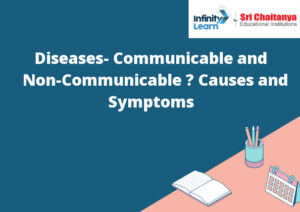Table of Contents
Diseases Communicable And Non-communicable
There are two main types of diseases: communicable and non-communicable.
Communicable diseases are those that can be spread from one person to another, either through contact with an infected person, or through the air. Some common communicable diseases include the flu, chickenpox, and measles.
Non-communicable diseases, on the other hand, are not spread from person to person. Instead, they are caused by things like genetics, lifestyle choices, or environmental factors. Some common non-communicable diseases include heart disease, cancer, and diabetes.

Communicable Diseases
A communicable disease is a disease that can be spread from one person to another. Some common communicable diseases include the flu, chickenpox, and measles.
Examples of Communicable Diseases
There are many different communicable diseases, but some of the most common ones include the flu, chicken pox, and measles. These diseases are all spread through contact with an infected person, and can cause a variety of symptoms, depending on the disease. Some of the most common symptoms include fever, coughing, and sneezing.
Causes of Communicable Diseases
There are many different causes of communicable diseases. Some of the most common causes include bacteria, viruses, and parasites. These organisms can cause infections and illnesses when they enter the body. Other causes of communicable diseases include exposure to toxins and environmental pollutants.
Symptoms of Communicable Diseases
There are a variety of symptoms that may be exhibited by someone who is infected with a communicable disease. Some of the most common symptoms include fever, coughing, sneezing, and a general feeling of being unwell. In some cases, more serious symptoms may develop, such as difficulty breathing, chest pain, or confusion. If you are experiencing any of these symptoms, it is important to seek medical attention right away.
Treatment of Communicable Diseases
There are many ways to treat communicable diseases. The most common way is to use antibiotics to kill the bacteria that is causing the infection. Other treatments include antiviral drugs for viruses, and antifungal drugs for fungi. Some diseases, such as AIDS, cannot be cured, but treatments are available to prolong the patient’s life.
Non-Communicable Diseases
Non-communicable diseases (NCDs) are illnesses that are not caused by infections and are not passed from person to person. These diseases are also called chronic diseases.
NCDs can include heart disease, stroke, cancer, diabetes, and lung disease. They are the leading causes of death and disability around the world.
NCDs are often the result of a combination of factors, including lifestyle choices, such as smoking, diet, and physical inactivity, and genetics.
Causes of Non-Communicable Diseases
There are many different causes of non-communicable diseases. Some of the most common causes include:
-Smoking
-Poor diet
-Lack of exercise
-Excessive alcohol consumption
-Air pollution
-Infections
Symptoms of Non-Communicable Diseases
There is no one-size-fits-all answer to this question, as the symptoms of non-communicable diseases can vary significantly from one person to the next. However, some of the most common symptoms of non-communicable diseases include:
Chronic pain
Chronic fatigue
Frequent infections
Difficulty breathing
Swollen or painful joints
Unexplained weight gain or loss
Nausea and vomiting
Diarrhea or constipation
Changes in mental status, such as confusion or mood swings
If you experience any of these symptoms, it is important to see a doctor right away.
Treatment of Non-Communicable Diseases
There is no one-size-fits-all answer to the question of how to best treat non-communicable diseases. However, many experts agree that a combination of lifestyle changes, medication, and/or surgery may be necessary to achieve the best possible results.
What is Asymptomatic Transmission?
Asymptomatic transmission is a mode of transmission of a pathogen where the infected individual is not aware of being infected, and does not exhibit any symptoms of the disease. Asymptomatic transmission can occur through contact with infected secretions, such as saliva or blood, or through contact with contaminated surfaces, such as doorknobs or countertops. Asymptomatic transmission can also occur through contact with infected animals or vectors, such as mosquitoes.









